Pelophylax kl. esculentus
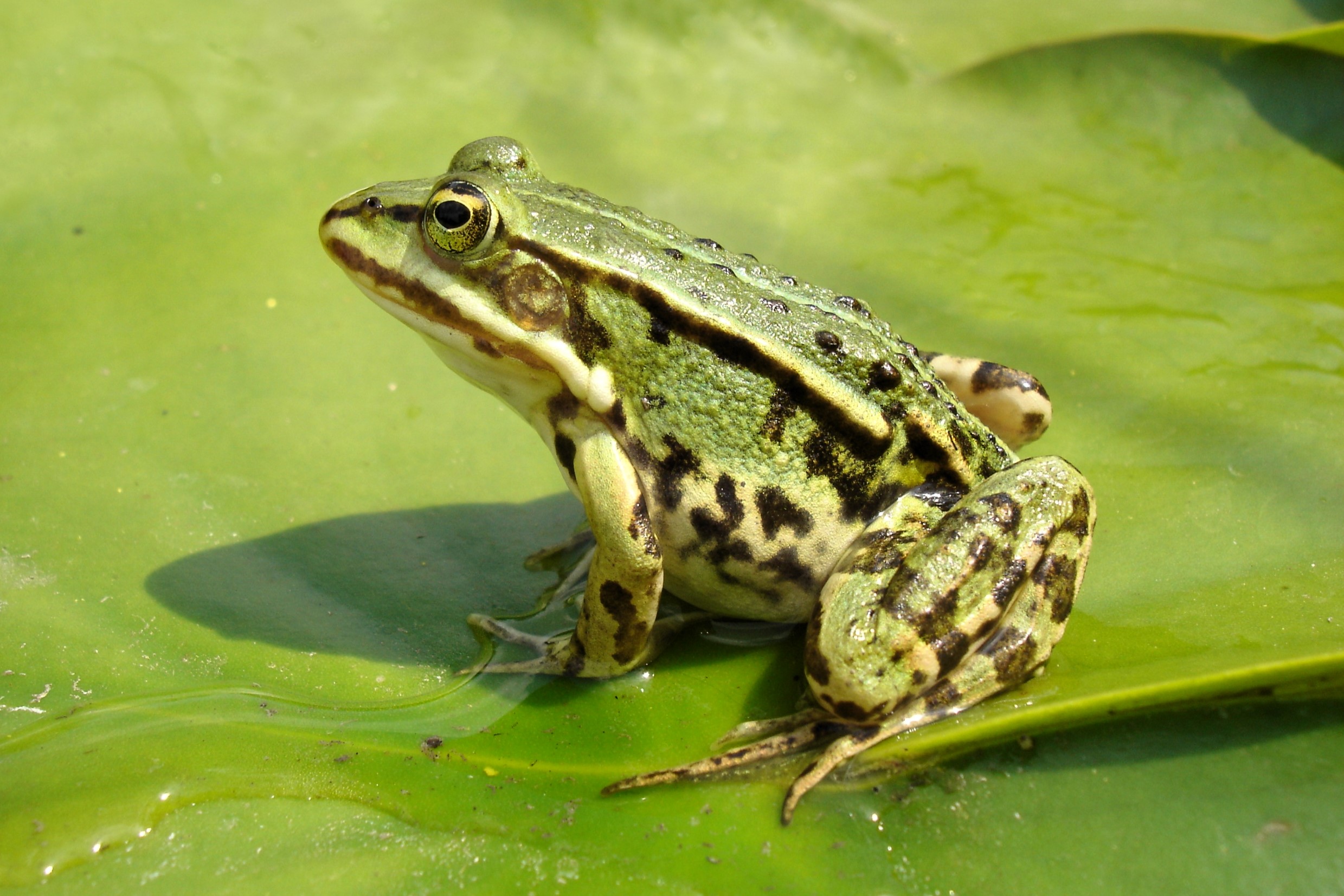

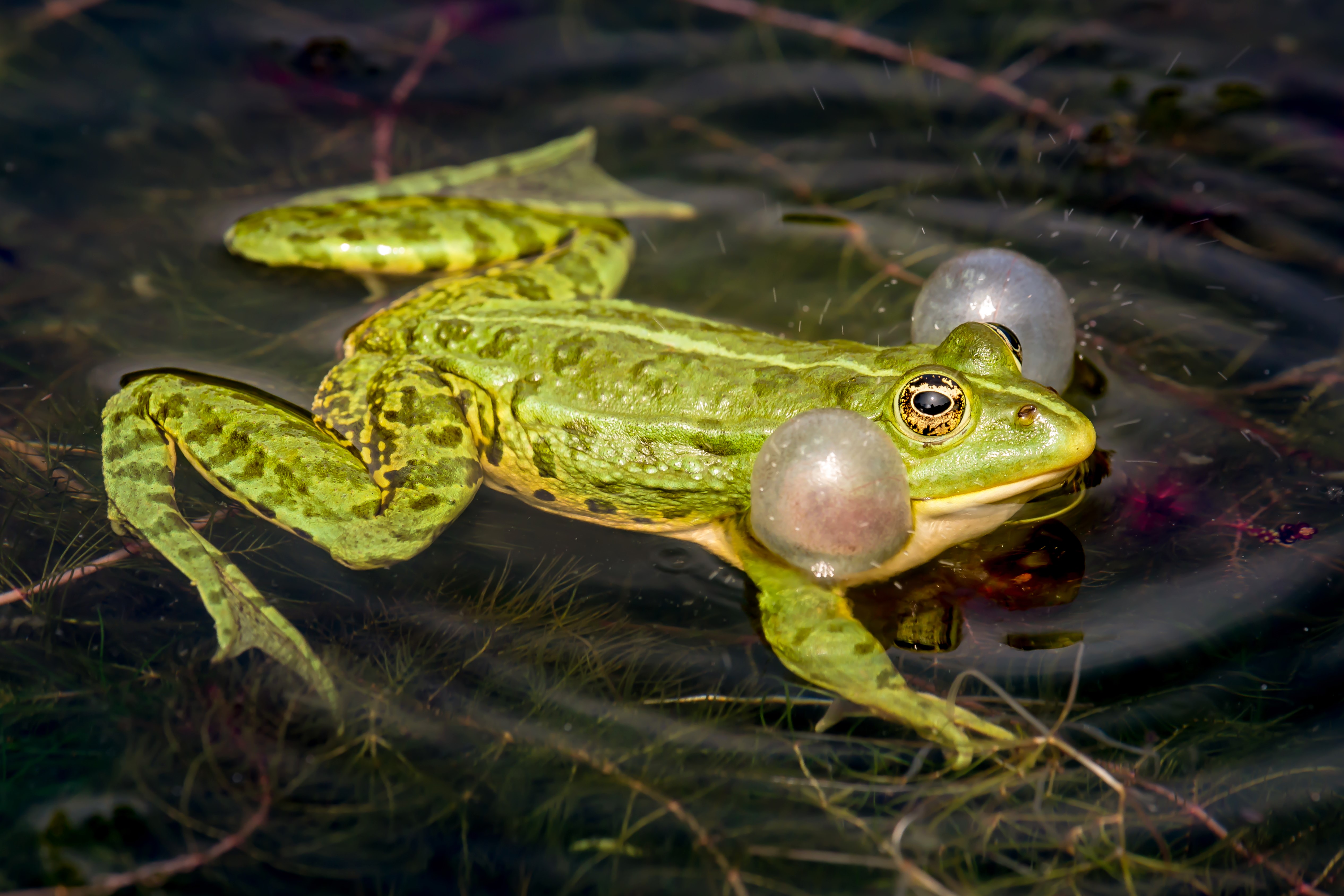
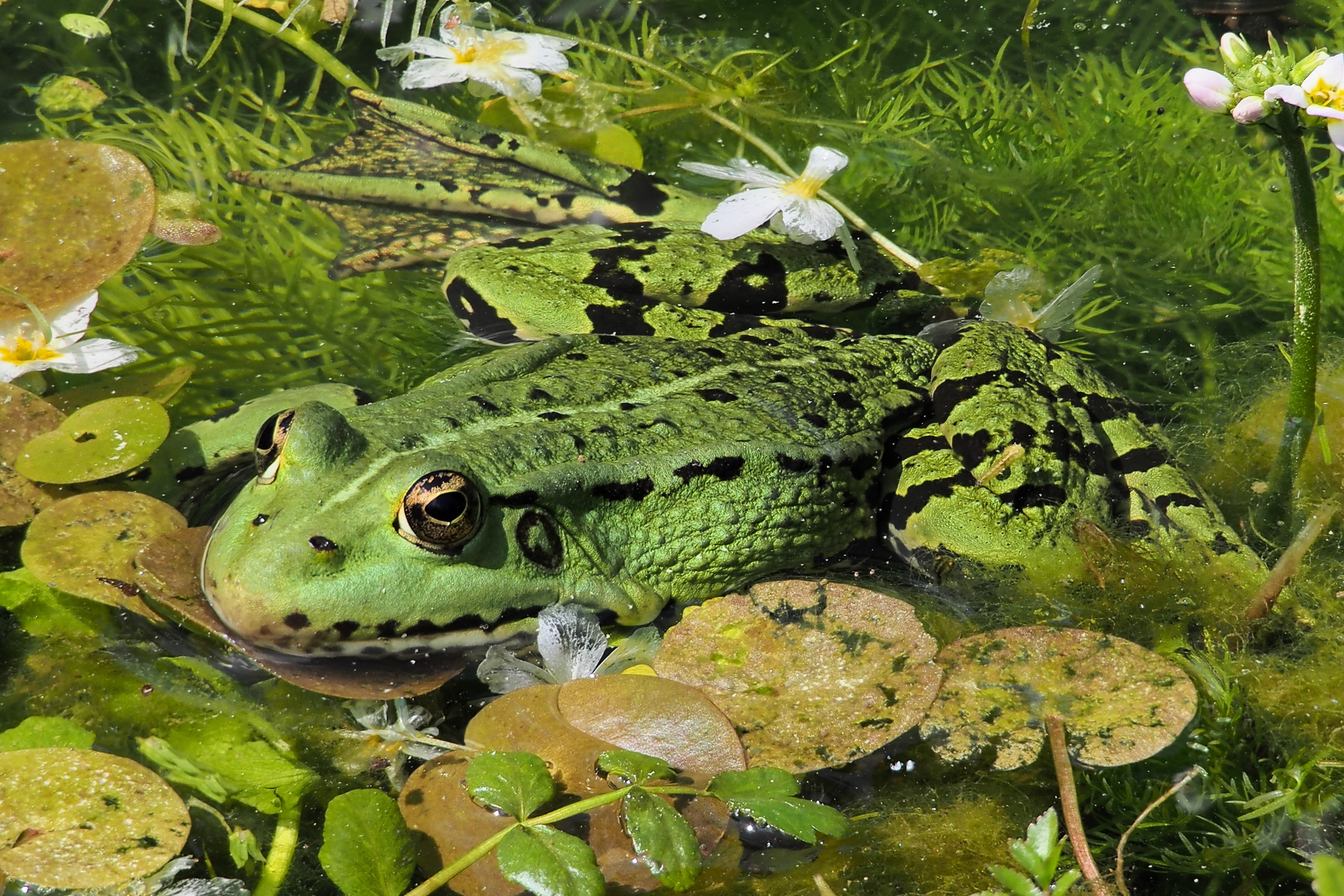
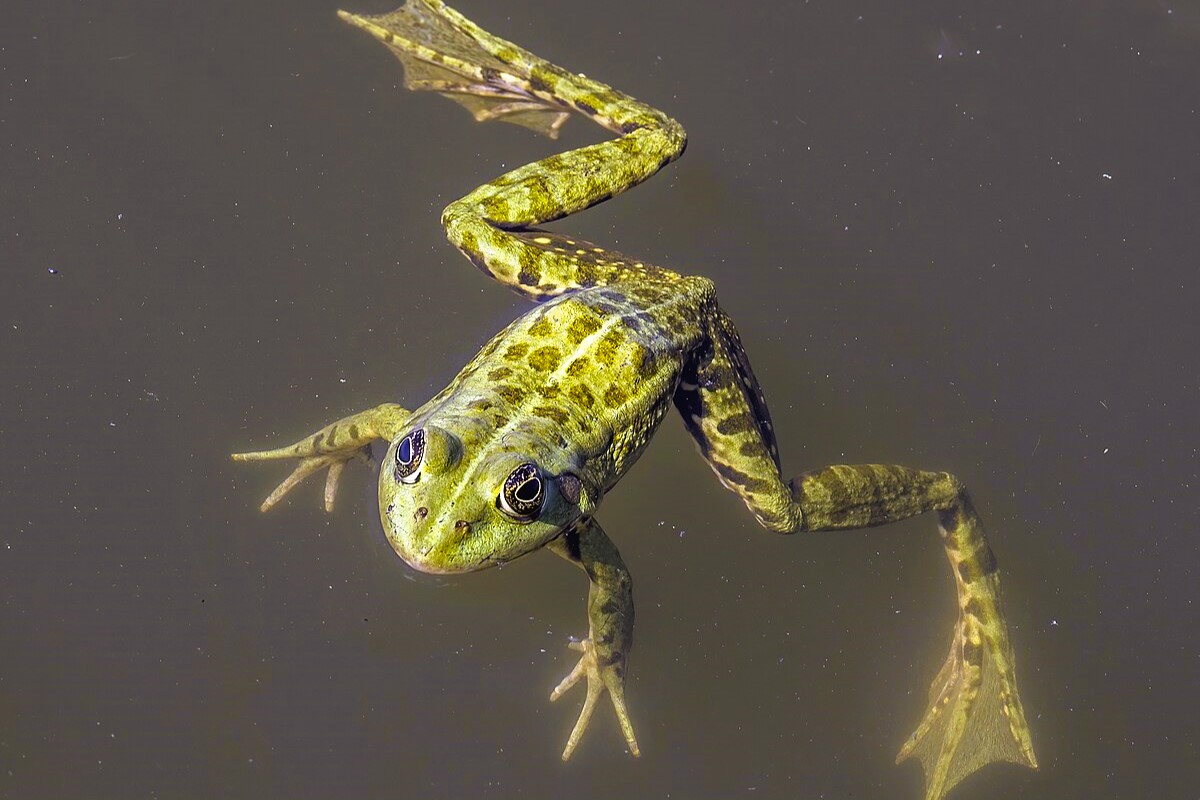
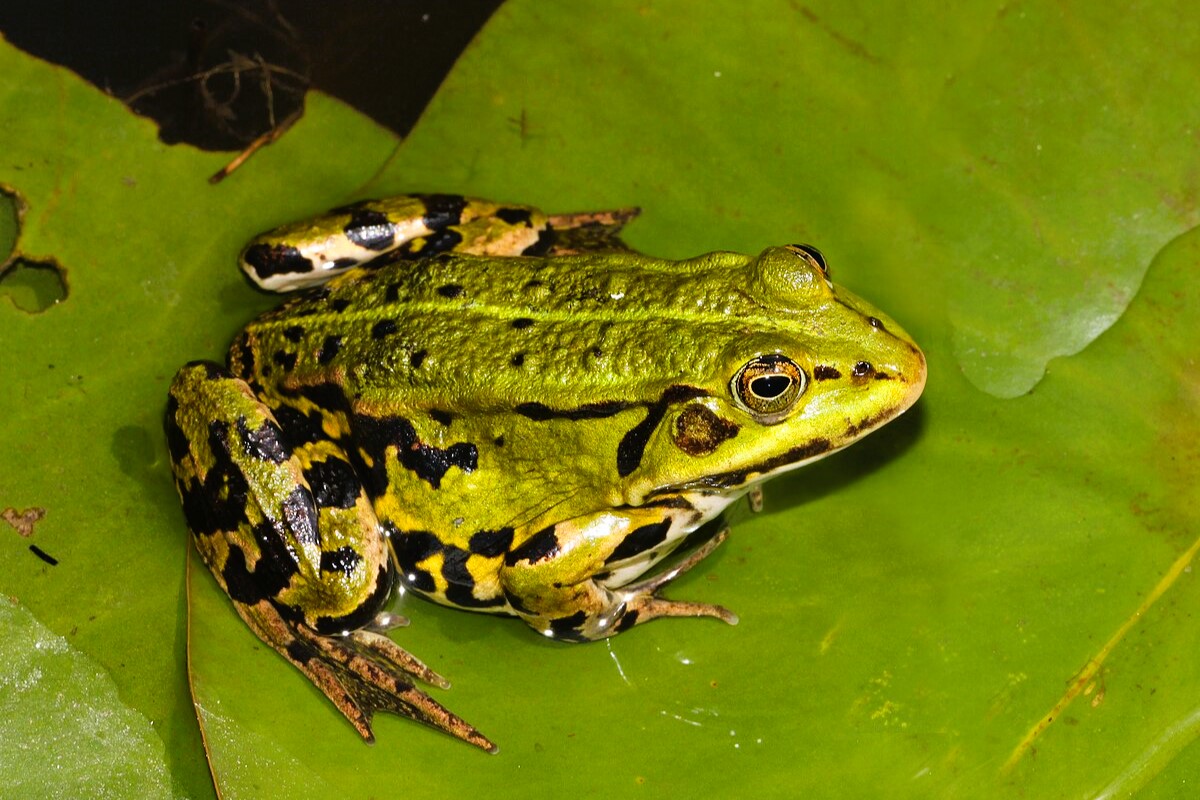
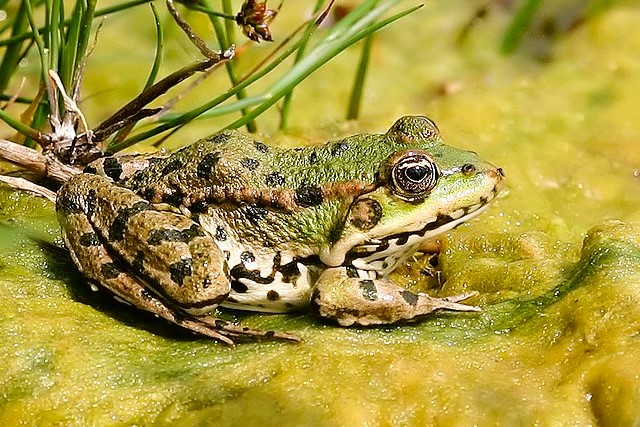
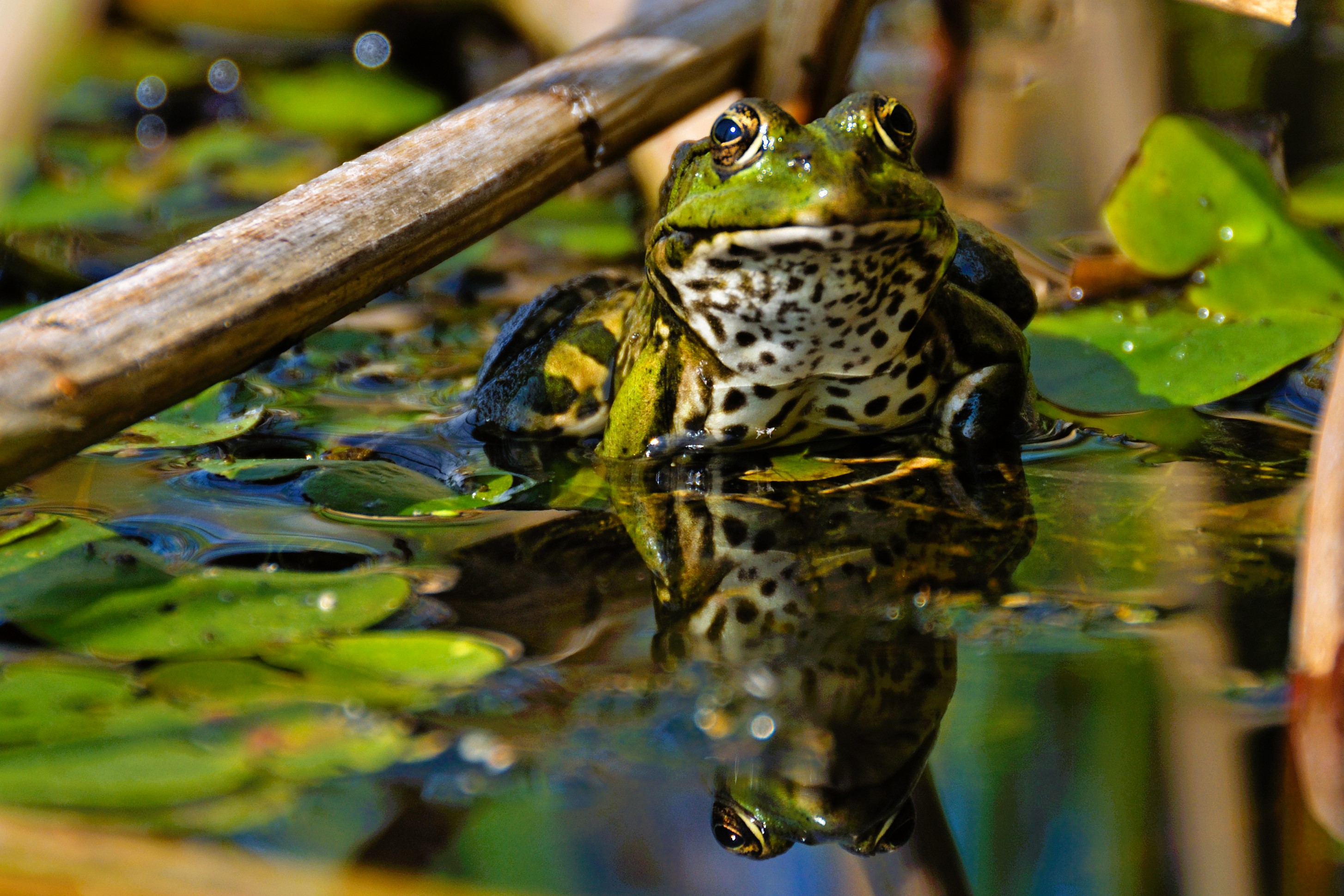
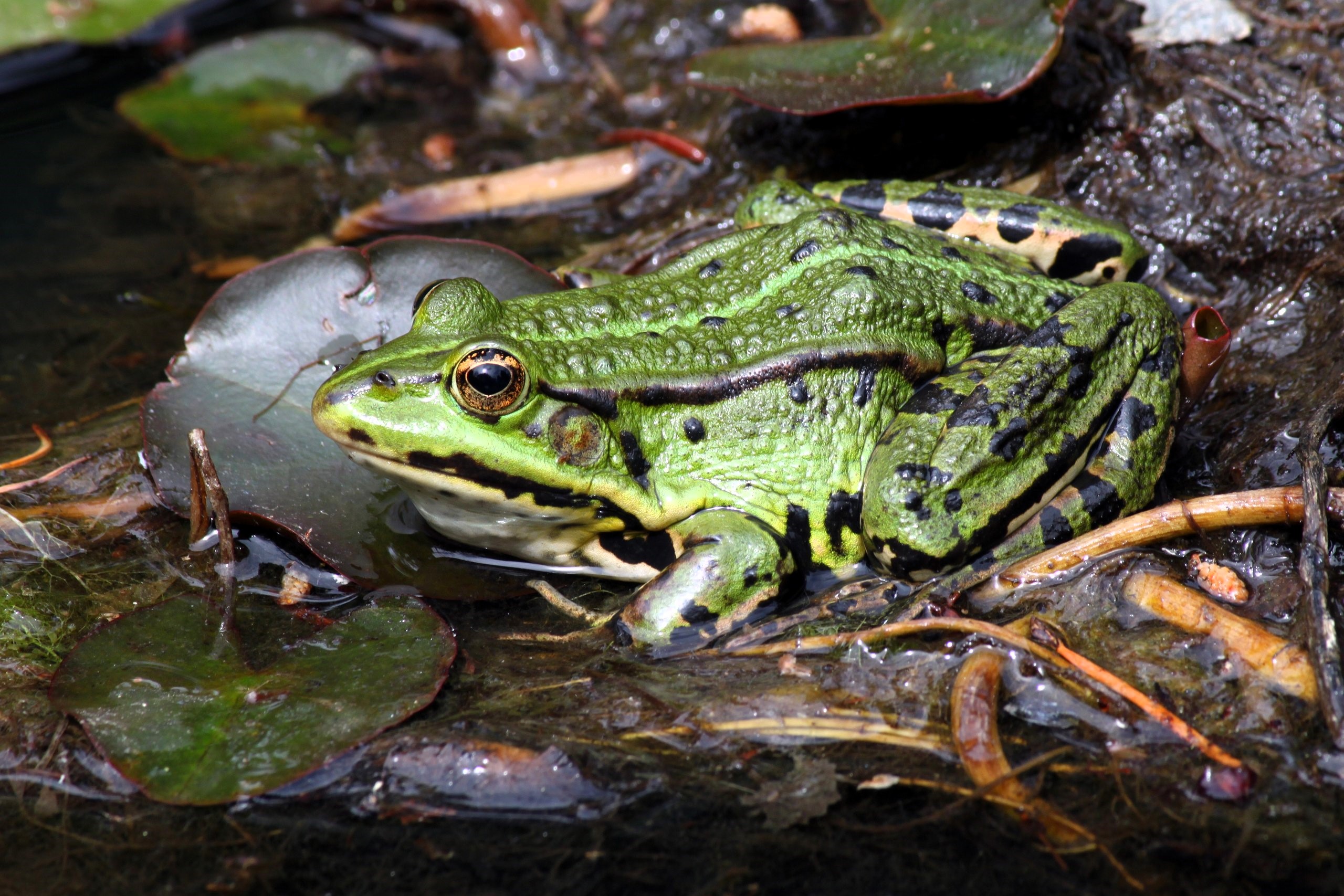
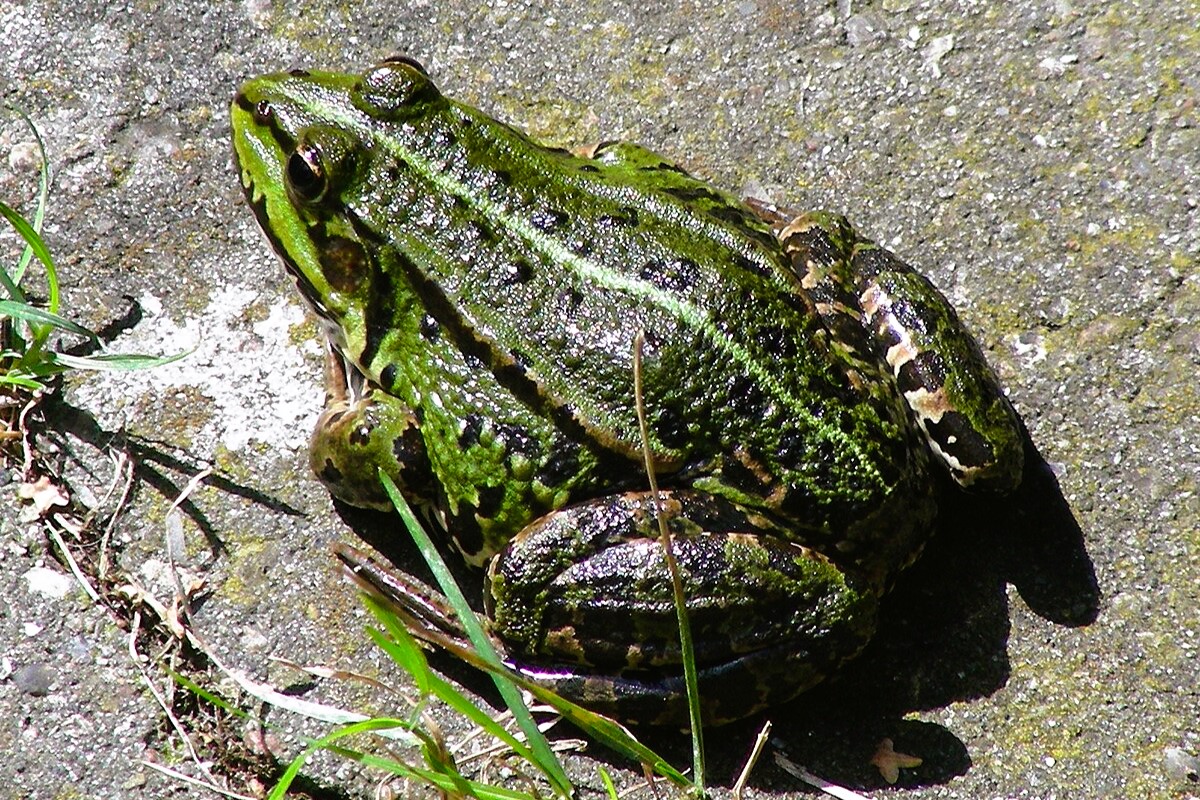
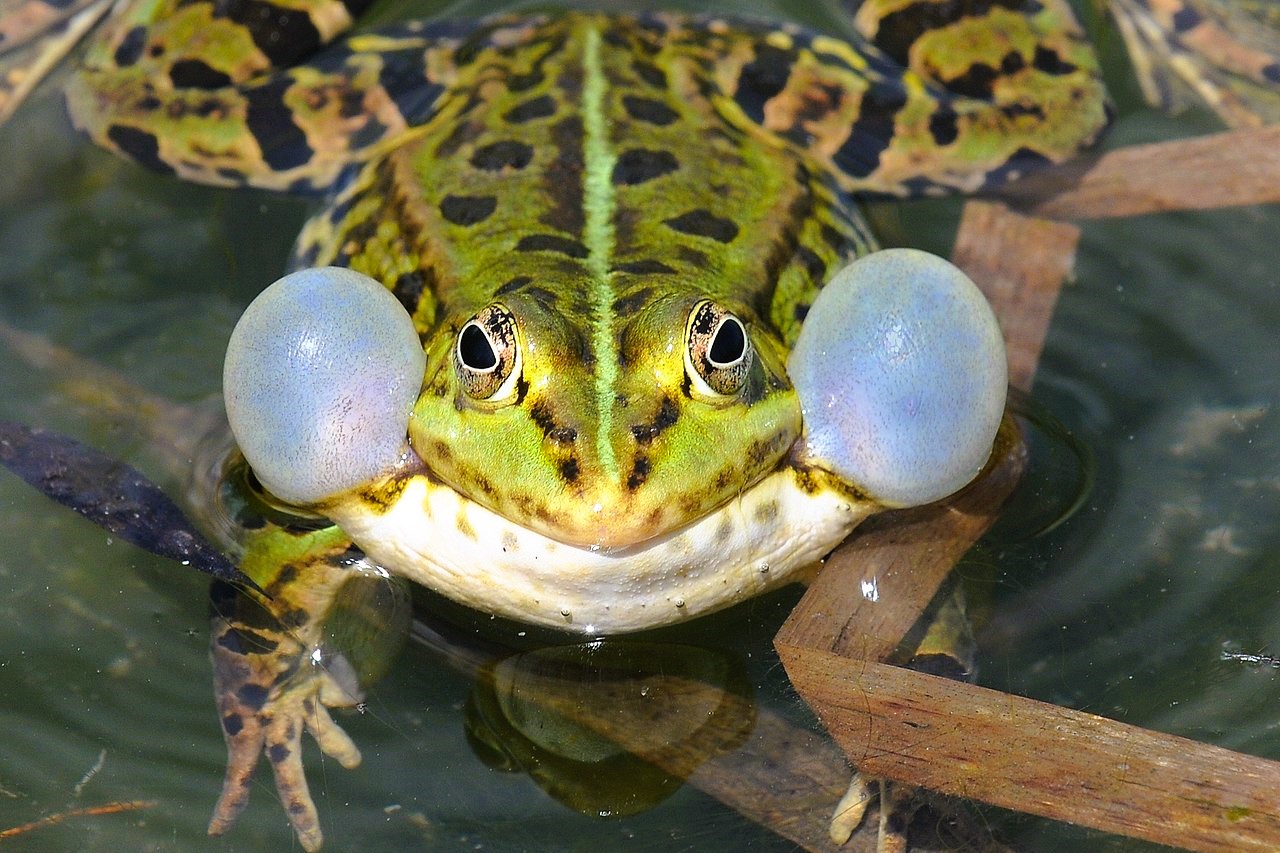
Amphibia → Anura → Ranidae → Pelophylax kl. esculentus
Rana vërde, Gritta
The edible frog ( Pelophylax kl. esculentus ) is a unique case in the European fauna, as it is a fertile hybrid between the pool frog ( Pelophylax lessonae ) and the marsh frog (Pelophylax ridibundus). It is medium to large in size with extremely variable coloration: from bright green to brown-olive tones, often with marked dark spots on the back.
Average adult sizes are:
Sexual dimorphism is expressed in several distinctive features:
Tadpoles, at hatching, average 0.28–0.31 in (7–8 mm) and show a brownish-green coloration with tiny golden spots, an adaptation useful for aquatic life in early development stages.
In Western Liguria, Pelophylax kl. esculentus is the most common and widespread green frog species. It is regularly found from sea level up to about 2,600 ft (800 m) above sea level, successfully colonizing almost all suitable wetlands, both in the valleys and in coastal and sub-coastal areas. Its constant presence is a key factor for the local wetland biodiversity.
This species prefers a wide variety of aquatic environments, showing remarkable adaptability. The most frequently occupied habitats include:
The ability to exploit both rural and periurban areas makes Pelophylax kl. esculentus particularly resilient compared to other amphibians.
The activity of the edible frog ( Pelophylax kl. esculentus ) is both diurnal and nocturnal, with a distinct preference for periods of greater sunlight, necessary for thermoregulation. The winter dormancy period generally lasts from November to March, but can vary according to altitude and local climate conditions.
The breeding cycle takes place from April to July: males emit powerful and repeated calls, especially in the evening and at night. Females lay from 1,000 to 4,000 eggs, which are aggregated in gelatinous masses anchored to aquatic vegetation, providing protection and nourishment for the tadpoles. Metamorphosis from tadpole to adult is completed in about 3–4 months, a time span which can vary according to temperature and food availability.
The diet of the edible frog ( Pelophylax kl. esculentus ) is very varied and reflects its opportunistic nature:
This composite diet allows the species to adapt to different ecological contexts and reduces food competition with other sympatric frogs.
The main threats to Pelophylax kl. esculentus in the Ligurian area are multiple and often human-made:
The maintenance of wetland ecosystems remains crucial for the survival of the species.
Pelophylax kl. esculentus stands out for a few unique features among European anurans:
In Western Liguria, this species is under constant monitoring to assess population status and the impact of environmental changes. Its presence serves as a biological indicator of the quality and connectivity of aquatic habitats. Ensuring the conservation of the edible frog means protecting a tightly interconnected network of wetlands—for the benefit of amphibians and all local aquatic biodiversity.